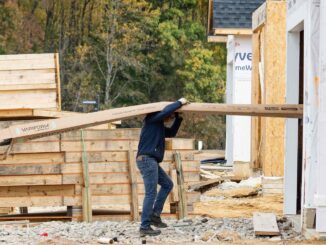
After 12 months of declines, existing home sales rebounded in February, climbing 14.5% month over month to a seasonally adjusted annual rate of 4.58 million homes, according to a report from the National Association of Realtors (NAR) released Tuesday.
February’s month-over-month increase is the largest monthly percentage increase recorded since the 22.4% monthly gain reported in July 2020. However, existing home sales were still down 22.6% in February on a yearly basis.
“Conscious of changing mortgage rates, home buyers are taking advantage of any rate declines,” Lawrence Yun, NAR’s chief economist, said in a statement. “Moreover, we’re seeing stronger sales gains in areas where home prices are decreasing and the local economies are adding jobs.”
In January and early February, mortgage rates fell from the mid-6% range to the low 6% and even high 5% range, incentivizing homebuyers who were sitting on the fence to buy now.
In addition to lower mortgage rates, homebuyers who closed sales on existing homes in February also saw a slight decrease in the median sales price, which fell to $363,000, a decrease of 0.2% year over year. This decrease ends a streak of 131 consecutive months of yearly price increases. It is the longest streak on record.
“Home prices fell in February, the first year-over-year decline in the national median home price in more than two decades,” Lisa Sturtevant, Bright MLS’ chief economist, said in a statement. “Higher mortgage rates have eroded buyers’ purchasing power and prices have taken a hit. But the drop in price is modest, and a lack of supply continues to prop up prices in many housing markets”
Although the sales pace increased in February, the number of days a home typically spends on the market ticked up slightly to 34 days, up from 33 days in January and up 18% compared to a year ago. Overall, 57% of homes sold in February were on the market for less than a month.
While the uptick in sales pace is certainly good news for the real estate industry, it is not as great for the continuous issues with low inventory. The number of existing homes on the market remained unchanged from January at 980,000, which represents 2.6 months of supply at the current sales pace. But despite the low level of inventory, the number of existing homes on the market is still up 15.3% compared to a year ago.
“Inventory levels are still at historic lows,” Yun added. “Consequently, multiple offers are returning on a good number of properties.”
Regionally, existing home sales rose month over month in all four regions, with the West recording the largest monthly increase at 19.4% to a sales pace of 860,000 homes. The South (annual rate of 2.11 million) posted the second highest monthly increase at 15.9%, followed by the Midwest (annual rate of 1.09 million) at 13.5% and the Northeast (annual rate of 520,000) at 4.0%.
Despite posting the largest month-over-month jump, the West still posted the highest yearly decline in sales rate, falling 28.3% from February 2022.



